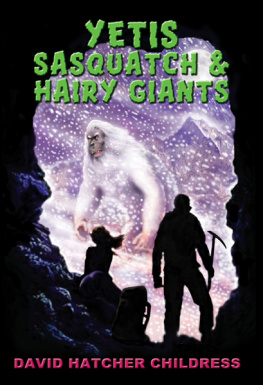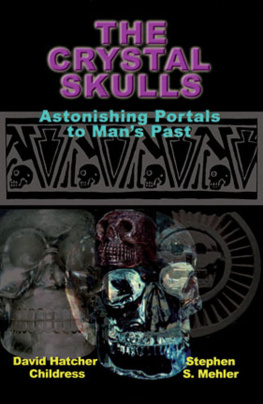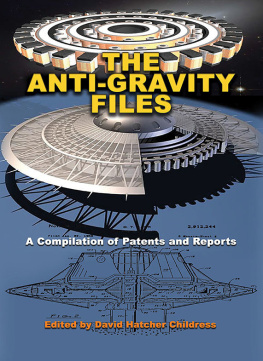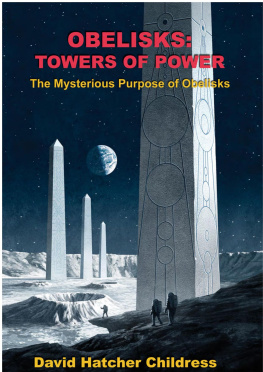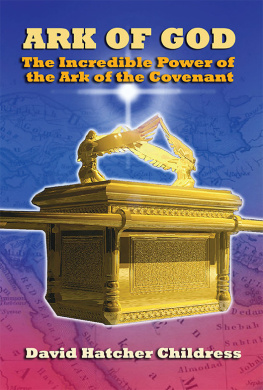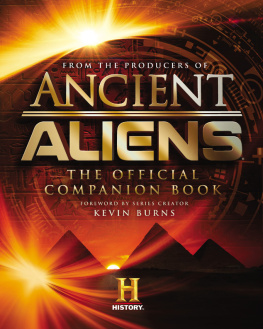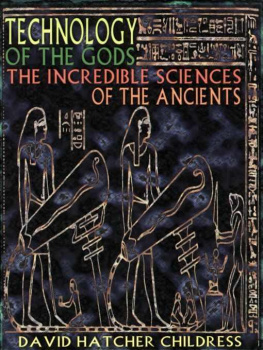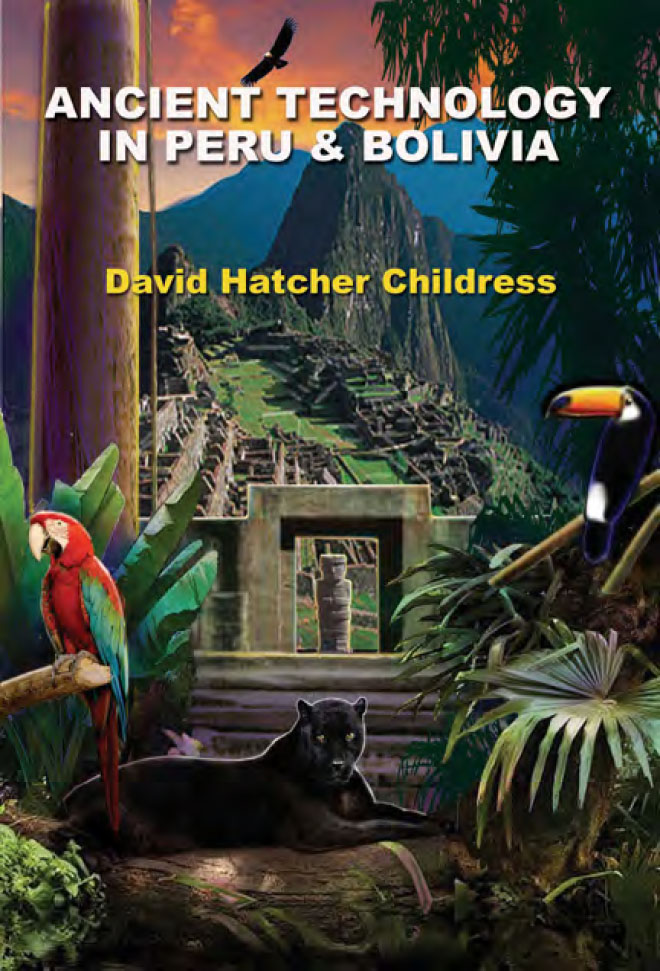
ANCIENT
TECHNOLOGY
IN PERU
& BOLIVIA

David Hatcher Childress
Other Books by David Hatcher Childress:
THE MYSTERY OF THE OLMECS
PIRATES AND THE LOST TEMPLAR FLEET
TECHNOLOGY OF THE GODS
A HITCHHIKERS GUIDE TO ARMAGEDDON
LOST CONTINENTS & THE HOLLOW EARTH
ATLANTIS & THE POWER SYSTEM OF THE GODS
THE FANTASTIC INVENTIONS OF NIKOLA TESLA
LOST CITIES OF NORTH & CENTRAL AMERICA
LOST CITIES OF CHINA, CENTRAL ASIA & INDIA
LOST CITIES & ANCIENT MYSTERIES OF AFRICA & ARABIA
LOST CITIES & ANCIENT MYSTERIES OF SOUTH AMERICA
LOST CITIES OF ANCIENT LEMURIA & THE PACIFIC
LOST CITIES OF ATLANTIS, ANCIENT EUROPE & THE MEDITERRANEAN
LOST CITIES & ANCIENT MYSTERIES OF THE SOUTHWEST
YETIS, SASQUATCHAND HAIRY GIANTS
With Brien Foerster
THE ENIGMA OF CRANIAL DEFORMATION
With Steven Mehler
THE CRYSTAL SKULLS
ANCIENT
TECHNOLOGY
IN PERU
& BOLIVIA

Adventures Unlimited Press
Ancient Technology in Peru and Bolivia
Copyright 2012
by David Hatcher Childress
ISBN 10: 1-935487-81-7
ISBN 13: 978-1-935487-81-4
All Rights Reserved
Published by:
Adventures Unlimited Press
One Adventure Place Kempton,
Illinois 60946 USA
AdventuresUnlimitedPress.com
10 9 8 7 6 5 4 3 2 1
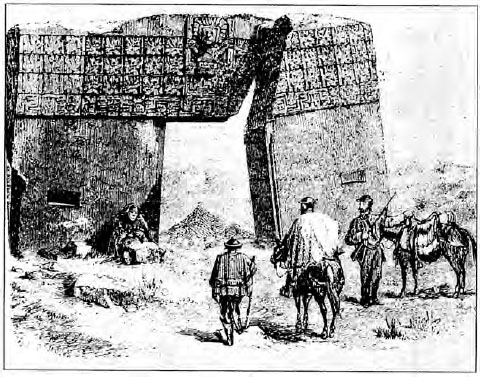
Thanks to the many people who have helped me in researching and
finishing this book including Jennifer Bolm, Christopher Dunn, Steve
Zagata, David Espejo, J.M. Allen, Jean-Pierre Protzen, Alan Alford,
Gene Savoy, the Precious Metals Museum in La Paz and plenty of
others.
ANCIENT
TECHNOLOGY
IN PERU
& BOLIVIA

David Hatcher Childress
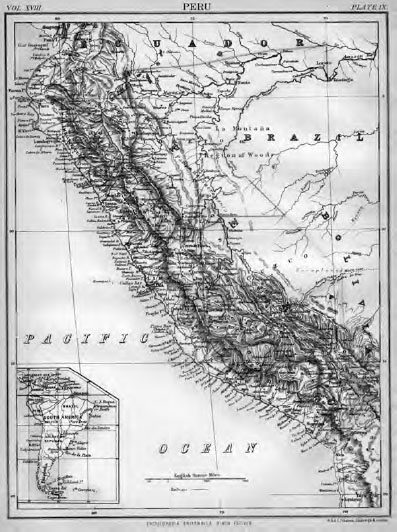
TABLE OF CONTENTS
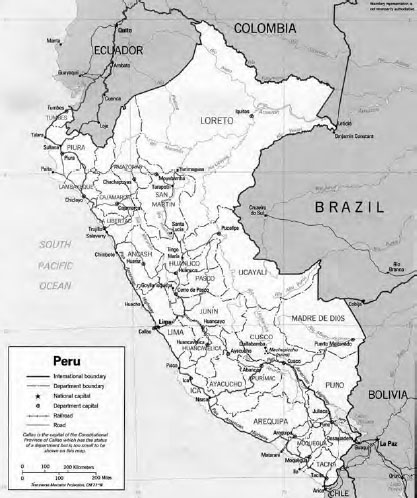

Two Sumeiian clay figurines from the Ubaid Period (5000 BC) showing elongated heads. The male on the left is from Eridu and the female on the right is from the ancient city of Ur. Are they the Annunaki of ancient Sumerian legend?
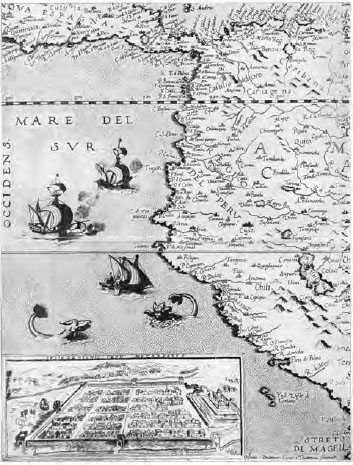
CHAPTER ONE
THE LOST WORLD
OF SOUTH AMERICA
If thou seekest El Dorado thou must ride,
boldly ride over the Mountains of the Moon
through the valley of the shadow...
Edgar Allen Poe
There was a sudden lurch and bounce as the planes wheels hit the tarmac of the airport runway. I looked out the window at the Lima, Peru airport buildings where the plane would be docking. I was back in South America, a land of mystery and adventure.
I had been here many times before, starting in 1985. I had first come to South America after traveling through Asia and Africa for years. A year after that 1985 trip, my third book was published, Lost Cities and Ancient Mysteries of South America, a paperback book still in print today and regarded as a classic in the field of archeology and travel adventure.
South America was still as much an enigma on my recent arrival as it was nearly 30 years ago. The continent of mystery and adventure that had attracted me back then still held its many secrets and lost cities, ancient ruins and baffling architecture that some attributed to ancient aliens. Indeed, in the many years since I first came to South America, I had traveled to many corners of the earth, written other books, and had appeared on a number of television shows, including one for the History Channel called Ancient Aliens.
That show postulated that many of the colossal megalithic remains around the world were the work of ancient astronauts and hybrid humans of their making. While some thought of the show as just a sensational promotion of the theory that ancient astronauts had made (or had a hand in making) many of the astonishing and baffling monuments around the world, including some in South America, I seriously wondered about the technology used in building some of these structures and just who the builders actually were. Were they extraterrestrials, or was there an ancient human culture with very advanced technology that constructed these giant walls; or maybe a combination of both?
The myth-busters maintain that there is nothing that special about these ancient monuments. Hard, time-consuming work, patience and massive manpower were all that were needed to quarry, move and erect these stone megaliths. Sure, in many cases the stonework is exceedingly excellent, but its not that big a deal. Why denigrate the talent of the locals by attributing their work to aliens or advanced technology?
But how and why would these people move giant blocks of stone many miles? The stone is often very hard granite or basalt and very difficult to cut and shape. Was it done with crude stone hammers and metal chisels, or was it done with precision equipment that used diamond-tipped saws, drills and other power tools? All of these questions fascinated me.
Using the funds and resources now available to me, I decided to journey again to La Paz, Lake Titicaca and the Cuzco area to do more research. I asked British/American engineer and friend Christopher Dunn to accompany me to Peru and Bolivia to have a look at some of the worked stone and give his professional engineering opinion. He was the author of two books, The Giza Power Plant and Lost Technologies of Ancient Egypt. I was a fan of his work and had been on several trips with him to Egypt, and I was a believer in ancient technology that included hard metals, electricity, complicated machines and high technology like levitation, anti-gravity and flight. My own books often discuss these topics and some of my books, like Technology of the Gods and Vimana Aircraft of Ancient India and Atlantis, are well known for their exposition of the concept of advanced technology in the ancient world.
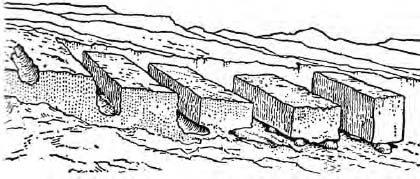
A typical method for excavating megalithic blocks at a quarry.
Chris, my wife Jennifer, and a few members of the World Explorers Club who also accompanied us, followed me off the plane. We got our luggage and exited the main terminal of the Hugo Chavez International Airport. I arranged for two taxis to take us to the El Condado Hotel in the Miraflores district of Lima. After we settled into our rooms we walked down the coast and had lunch at a restaurant on the edge of a cliff over the Pacific Ocean.
Next page


